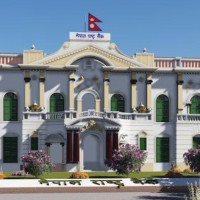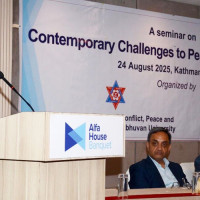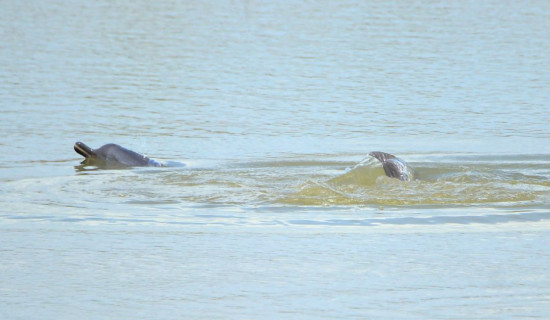- Monday, 25 August 2025
Expand Green Spaces
The Kathmandu Valley’s rapid urbanisation and population growth come at a heavy price. An excessive number of concrete and vehicles makes it impossible for people to breathe clean air. Urban heating is intensifying and public spaces remain minimal in number. In such a scenario, areas along the river banks are emerging as the new public spaces for most people. The need for open and green spaces has always been felt in this unplanned valley. It was especially so during the devastating earthquake of 2015, when people had to desperately seek safer places.
From an ecological perspective, open spaces with ample trees are essential to reduce urban heating in the city. A study by the Urban Climate has shown that urban forests, parks and ponds in the Kathmandu Valley can reduce urban heating by 1.6 degrees Celsius when managed strategically. Likewise, open spaces with sufficient greenery are fundamental to safeguard and boost people’s mental health. It is a proven fact that exposure to nature can reduce anxiety and depression among people, enhancing their overall mental well-being.
However, our haphazard urban planning is more concentrated on meeting residential and commercial needs, while mostly ignoring the integration of the environment. Amidst such a situation, a new practice of maintaining and managing open spaces along the river banks is gaining traction. Rivers are closely tied to human existence, and they are known to be a foundation for human civilisation.
Efforts made to manage and maintain river banks in the valley have not only enhanced the beauty of such areas but have also provided people with the opportunity to become close to nature.
One such case is the banks of the Manohara River in Purano Sinamanagal--Sanothimi area, which sees a large number of people every evening for a walk and just to enjoy nature. Green spaces are well-recognised for their ability to elevate the urban environment. In the contemporary world of climate change, they are a step towards mitigating and adapting to this phenomenon. Studies have indicated that the Kathmandu Valley’s open space accounts for only 0.5 per cent of the total spaces. This is abysmally low, as generally, at least 5 per cent of open space is a must in urban centres. Such a figure needs to be much higher in disaster-prone areas like Kathmandu, requiring 10-15 per cent of open spaces.
Amidst the growing need, building sustainable cities should remain the top priority of the government. The existing state of this valley can be enhanced by multiple folds even through small actions.
These include protecting and promoting existing urban green spaces like parks and formulating robust plans and policies, centred on mapping out areas where they can be built. Such planning and development efforts must be carried out by governments in close cooperation and collaboration with the community people to heighten participation, cohesion and unity in the public. Likewise, government-owned lands can be utilised to develop spaces with adequate greenery.
Our core issue remains in the belief that development activities like road expansion require the complete removal of trees and bushes. But, in hindsight, these practices are further detrimental to an already depleted urban environment. Therefore, we must transition towards sustainable development-- a path where society, economy and environment coexist.



-original-thumb.jpg)



-square-thumb.jpg)

-original-thumb.jpg)







